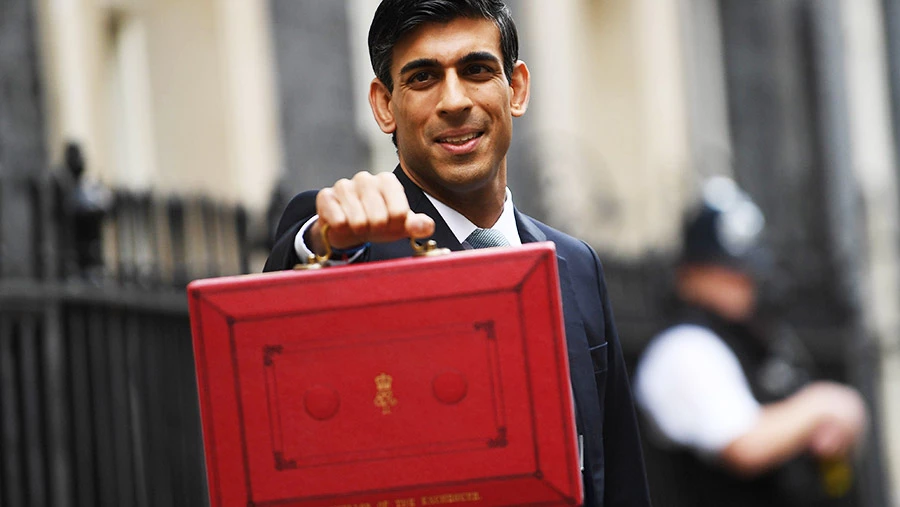
Partner Article
What 2020’s Budget means for the North East
The headlines are in, and the overwhelming indication is that, set against one of the most uncertain economic backdrops in recent times, new chancellor Rishi Sunak has laid ambitious plans. PSG Wealth Management MD, Paul Gilsenan, looks at some of the finer details.
The chancellor’s first Budget was announced against a challenging economic background, made worse by the growing spread of the coronavirus. Unsurprisingly, the emphasis was on the government’s spending plans, as it sought to fulfil its election promises; including substantially increased infrastructure expenditure and help to bridge the economic gap in northern regions.
These announcements were supported by a package of measures from the Bank of England, including a cut in the base rate by half a percent to 0.25%. The budget has been dubbed the ‘biggest giveaway since 1992’, however, while it has certainly made headlines, the direct, and indirect, impact on tax and financial planning strategy has been relatively low-key.
An increase in the National Insurance primary threshold and lower profits limit to £9,500 (from £8,632) from 6th April 2020 will be welcomed by both employees and the self-employed across the North East, along with a package of measures to cover both businesses and individuals from the economic impact of coronavirus.
There was significant pre-Budget speculation around Entrepreneurs’ Relief, which grants a 10% tax rate on capital gains realised from the disposal of a qualifying interest in a qualifying business, up to a lifetime gains limit of £10 million. While the relief will remain, the lifetime limit will reduce to £1 million. The chancellor indicated that this should not materially reduce the incentive to start and build businesses.
Turning to investments, parents across the region keen to make tax-efficient provision for their children will welcome the increase in the annual limit for Junior ISA subscriptions to £9,000 (from £4,368) for the 2020/21 tax year. For investors, the main change of note was the increase in the annual Capital Gains Tax exemption to £12,300 (up from £12,000) for the next tax year. The (tax-free) dividend allowance remains at £2,000. Taken together, these reliefs increase the tax attractions of an investment in unit trusts, subject to appropriate limits.
It was confirmed that the previously announced reduction in Corporation Tax to 17% would not be going ahead and this came to pass as the rate remains at 19%, still relatively low.
The tapered annual allowance for pensions has been a hot topic for high earners, especially members of the NHS Pension Scheme. We had expected the chancellor to increase the level at which the tapered allowance first applies, but not to the extent that he did. He increased the threshold and adjusted income levels by £90,000: meaning that no one with income under £200,000 will now be subject to the taper and will have a £40,000 annual allowance. However, it isn’t all reasons to cheer: the minimum that the annual allowance can taper down to will now be £4,000 rather than £10,000. If you have previously ceased or reduced contributions to a pension scheme, this may mean there is now more scope to reconsider this decision.
Ahead of the Budget, there was considerable discussion about the possibility of change to pensions tax relief and Inheritance Tax, but nothing was forthcoming. However, it’s worth remembering that this is the first of two Budgets this year and there are a number of factors that could come to impact autumn’s spending review.
This was posted in Bdaily's Members' News section by PSG Wealth Management Ltd .
Enjoy the read? Get Bdaily delivered.
Sign up to receive our daily bulletin, sent to your inbox, for free.








 Powering a new wave of regional screen indies
Powering a new wave of regional screen indies
 A new year and a new outlook for property scene
A new year and a new outlook for property scene
 Zero per cent - but maximum brand exposure
Zero per cent - but maximum brand exposure
 We don’t talk about money stress enough
We don’t talk about money stress enough
 A year of resilience, growth and collaboration
A year of resilience, growth and collaboration
 Apprenticeships: Lower standards risk safety
Apprenticeships: Lower standards risk safety
 Keeping it reel: Creating video in an authenticity era
Keeping it reel: Creating video in an authenticity era
 Budget: Creating a more vibrant market economy
Budget: Creating a more vibrant market economy
 Celebrating excellence and community support
Celebrating excellence and community support
 The value of nurturing homegrown innovation
The value of nurturing homegrown innovation
 A dynamic, fair and innovative economy
A dynamic, fair and innovative economy
 Navigating the property investment market
Navigating the property investment market